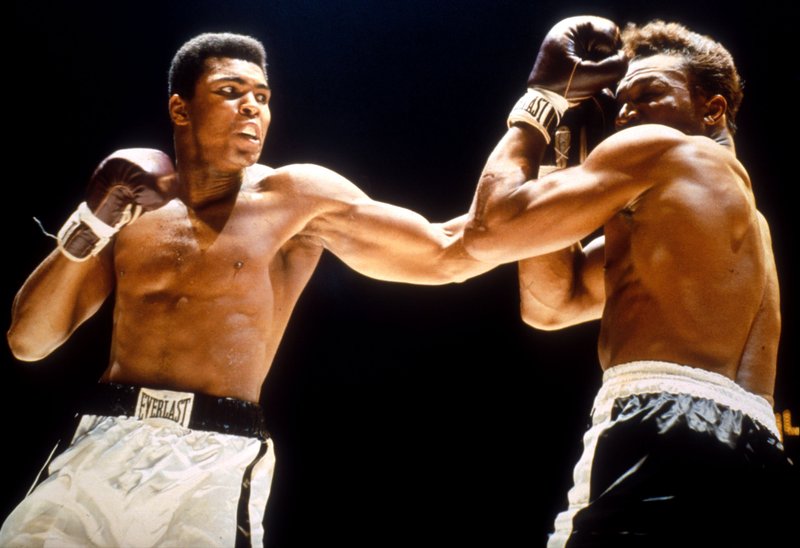Male vs. Female
home clitoris ambrosia kundalini homosexual cagedfemale
Very interesting article regarding women's orgasms vs men's for the English literates. =)
Make sure you read Section 2 in its entirely. It's the most important section.
 "In a patriotical society, the power of female sexuality is heavy handed suppressed by the sexually inferior but socially dominant male. One look at nature explains why men fear women who are sexually indulgent. If men let women dictate who they can mate, 80% of the male population would not get sex from women; there would be a lot of blue balls in men. Nature gave women genetically gifted ability to enjoy multiple orgasms and a clitoris with a sole purpose for sexual pleasure; there is nothing more else needed to say. However, scientific progress and economic competition is one of the advantages of patriotical society."
"In a patriotical society, the power of female sexuality is heavy handed suppressed by the sexually inferior but socially dominant male. One look at nature explains why men fear women who are sexually indulgent. If men let women dictate who they can mate, 80% of the male population would not get sex from women; there would be a lot of blue balls in men. Nature gave women genetically gifted ability to enjoy multiple orgasms and a clitoris with a sole purpose for sexual pleasure; there is nothing more else needed to say. However, scientific progress and economic competition is one of the advantages of patriotical society."
On male vs. female genetic bodily blueprint, "superficially egotistic (externally visual penis) vs. secretly powerful/dominant (hidden body parts, discreet)" - ThighSqueeze.com
SECTION ONE:
Females Have More Sex Compared With Male
Rhawn Joseph, Ph.D.
Brain Research Laboratory
Brain-Mind.com
Abstract
A review of world wide statistics for prostitution and infection rates for sexually transmitted disease, and the literature on animal sexual behavior was conducted, and it was concluded that on average, females have more sex partners than the average male. Over 200 million women work as prostitutes and they have sex with an estimated 694 to 1000 (or more) men a year and with over 5,000 men during their career. The average male has fewer than 10 sex partners in a life time. Females become infected with sexually transmitted diseases at a rate 2.5 to 5 times that of males, which suggests a relatively larger percentage of females are having sex with a relatively smaller percentage of males. A review of the animal literature also indicates non-human females have more sex partners, on average, as compared to males. Females of many species, including humans, preferentially and repeatedly mate with (a relatively small percentage of) high status males while refusing sex with (the relatively higher percentage of) low status males. Males also experience a "refractory period" following orgasm, whereas females are capable of experiencing multiple orgasms and multiple sex partners, one after another, all of which contributes to the fact that females, on average, have more sex partners than the average male.
Men are supposedly more desirous of sex and have more sex partners than women on average, according  to "conventional wisdom" and as reported in all surveys on sex differences in sexual activity (Abma et al., 1997; Davis, & Smith, 1994; Greer & Buss, 1994; Hite, 1981; Kinsey et al., 1953; Laumann et al., 1994; Sprecher & MecKinney, 1993; Valois, Kammermann, & Drane, 1997). However, if these reports are accurate, we would be forced to conclude that humans differ from almost all other species surveyed. Stereotypically, almost regardless of all species, nearly all adult females will mate, often with multiple male sex partners. By contrast, a significant minority of males, and in some species, the majority of males, never have a sex partner (Bateman, 1948; Cade, 1985; Clutton-Brock, 1987; Howard, 1978; Lott, 1979; McCann, 1981; Thornhill, 1981; Trivers, 1976). Females generally have more sex and more sex partners than the average male, and this is also the case for many species of primate (Carpenter, 1942; Hausfater, 1975; Lancaster, 1978; Seyfarth, 1977; Smuts, 1987; Tutin, 1975; Zuckerman, 1932).
to "conventional wisdom" and as reported in all surveys on sex differences in sexual activity (Abma et al., 1997; Davis, & Smith, 1994; Greer & Buss, 1994; Hite, 1981; Kinsey et al., 1953; Laumann et al., 1994; Sprecher & MecKinney, 1993; Valois, Kammermann, & Drane, 1997). However, if these reports are accurate, we would be forced to conclude that humans differ from almost all other species surveyed. Stereotypically, almost regardless of all species, nearly all adult females will mate, often with multiple male sex partners. By contrast, a significant minority of males, and in some species, the majority of males, never have a sex partner (Bateman, 1948; Cade, 1985; Clutton-Brock, 1987; Howard, 1978; Lott, 1979; McCann, 1981; Thornhill, 1981; Trivers, 1976). Females generally have more sex and more sex partners than the average male, and this is also the case for many species of primate (Carpenter, 1942; Hausfater, 1975; Lancaster, 1978; Seyfarth, 1977; Smuts, 1987; Tutin, 1975; Zuckerman, 1932).
Prostitution
"Get them up. Get them off. And Get them out."
-Motto in a house of prostitution
As first detailed by Joseph, (2000a) and as recently supported by findings reported by Brewer et. al., (2000) conventional wisdom and the results from all published sex surveys have failed to include or take into consideration the sexual activity of female prostitutes. In consequence, the authors of these surveys have falsely reported that males have more sex partners on average.
According to the 1998 report of the International Labor Organization (1998) and the Coalition Against Trafficking in Women (Hughes, 2000), over 200 million women world wide work as prostitutes and have sex with over 5 men a "working" day. In fact, as a man can ejaculate within a matter of minutes, a prostitute working in a busy brothel may have sex with up to 5 men in just a few hours.
Brewer et al. (2000) estimate that the average American prostitute has 694 partners a year. Based on income, crime statistics, and physiological variables, Joseph (2000a) estimates that world-wide, a full time prostitute may have sex with over a 1000 men a year; though the actual figure may be much higher.
In some countries up to 30% of young adult females work as prostitutes, with the sex industry accounting for up to 14% of the gross domestic product (International Labor Organization, 1998; Hughes, 2000). In Indonesia, for example, the gross income from prostitution is around 3.6 billion dollars, whereas in Thailand the income is almost 27 billion dollars annually (Hughes, 2000; International Labor Organization, 1998).
Thus based on labor statistics and the income generated, it appears that world wide over 200 million women, over 10% of the adult female population, have sex with 694 to over 1000 men a year. And, the majority of these women probably have sex with over five thousand men each, during the course of their working career. Although it is true that a few professional athletes and male movies stars have claimed to have had sex with thousands of women, these males are the exception as most males instead tend to report (on average) fewer than 10 sex partners in a life time (Davis & Smith, 1994; Greer & Buss, 1994; Kinsey et al., 1953; Laumann et al., 1994; Sprecher & MecKinney, 1993; Valois et al., 1997).
Sexually Transmitted Diseases
When prostitutes and sex differences in infection rate for sexually transmitted diseases (SDS) are considered, it can be deduced that women in general have more sex and more sex partners than males on average (Joseph, 2000a), which is also the case with most other species (Bateman, 1948; Cade. 1985; Carpenter, 1942; Clutton-Brock, 1987; Hausfater, 1975; Howard, 1978; Lancaster, 1978; Lott, 1979; McCann, 1981; Thornhill, 1981; Trivers, 1976; Seyfarth, 1977; Smuts, 1987; Tutin, 1975; Zuckerman, 1932). In fact, these sex differences in human sexual activity can be deduced based on the percentage of males vs females who become infected with SDS (Joseph, 2000a).
 Data provided by the Centers for Disease Control (1991, 1996, 1997a,b;), Webster and colleagues (1991; Webster, Berman, and Greenspan, 1991; Webster & Rolfs, 1991), and the World Heath Organization (2000), indicate that females have a significantly higher rate of infection for HIV, gonorrhea, syphilis, and chlamydia, and that females between the ages of 15 and 19, have the highest infection rate of all age groups.
Data provided by the Centers for Disease Control (1991, 1996, 1997a,b;), Webster and colleagues (1991; Webster, Berman, and Greenspan, 1991; Webster & Rolfs, 1991), and the World Heath Organization (2000), indicate that females have a significantly higher rate of infection for HIV, gonorrhea, syphilis, and chlamydia, and that females between the ages of 15 and 19, have the highest infection rate of all age groups.
For example, in both 1991 and 1995, over half a million cases of chlamydia in the United States were reported, and the rate of infection for young females was found to be six time higher than for men, with an incidence of rate of 290.3 per 100,000 for females, versus 52 per 100,000 for males (Centers for Disease Control, 1991, 1997a; Webster et al., 1991).
In addition, females in the U.S., have a syphilis infection rate that is 2 to 5.5 times higher than males, with a 35 per 100,000 incidence rate for adult females versus 18 per 100,000 for adult males (Centers for Disease Control, 1991, 1996, 1997a; Webster et al. 1991). Females aged 10-14 have a syphilis infection rate that is 5.5 times higher than males their own age (Centers for Disease Control, 1991). Likewise, the incidence of gonorrhea among females aged 15-19 is 1,043.6 per 100,000 vs 882.6 per 100,000 for males (Centers for Disease Control, 1991; Webster et al. 1991).
Moreover, as based on an analysis of 36 countries, it was found that women under age 20 have twice the rate of infection with the AIDs virus than do young males and that the HIV infection rate is highest for women between the ages of 15 and 25 (World Health Organization, 2000). Among American youths, the HIV rate is about 4.2 per 1,000 girls, versus 2.0 per 1000 boys. Regardless of age, the HIV rate for men never equals that of women (World Health Organization, 2000) which argues against the notion that an equal number of older men are infecting an equal number of younger women.
Females Preferentially Mate with High Status Males
Based on sex differences in the rate of SDS, coupled with the world wide statistics regarding prostitution, it appears that a relatively larger percentage of females are repeatedly having sex with a much smaller percentage of males, and that a small percentage of males are having sex with multiple female sex partners including prostitutes (Joseph, 2000a); which is exactly the case among other species.
For example, a significant minority, and in some species, the majority of males never have sex as females refuse to mate with them due to the male's low status or lack of resources (Bateman, 1948; Carpenter, 1942; Clutton-Brock, 1987; Hausfater, 1975; Howard, 1978; Lancaster, 1978; Lott, 1979; McCann, 1981; Thornhill, 1981; Trivers, 1976; Seyfarth, 1977; Smuts, 1987; Tutin, 1975; Zuckerman, 1932). Among insects it has been reported that 85% of the females are mated by less than 5% of all males (Cade, 1985).
Non-human primate females, such as baboons, rhesus, and chimpanzees, seek out and have sex with high ranked males and avoid lower ranking, and in particular the lowest ranked males (Carpenter, 1942; Hausfater, 1975; Lancaster, 1978; Seyfarth, 1977; Smuts, 1987; Tutin, 1975; Zuckerman, 1932). The female will refuse sex by lowering her hindquarters.
Although an estrus female chimp may copulate up to 50 times in a day, and although she may have up to 20 or more males to choose from, she may instead choose to repeatedly mate with only 8 of the available males who generally tend to be of high status (Goodall, 1986; Tutin, 1975).
In polygynous primate species, only perhaps 25% of the males ever mate (Fedigan, 1992). In one colony of free ranging rhesus monkeys, although there were 150 adult females and 52 males, most of the estrus females actively sought out and mated with the same three dominate males (Carpenter, 1942). In some colonies, only about 20% of the males are responsible for 80% of the matings (Freedman, 1979). Similarly, in one study of 25 male and 25 female captive baboons, it was observed that the females mated selectively with only five of the males (Zuckerman, 1932).
Even among highly promiscuous primates, such as chimpanzees, low ranking males often have difficulty obtaining sex due to male competition and female choice (Goodall, 1986; Nishida, 1990; Sade, 1967; Small, 1989; Smuts, 1987; Taub, 1980). High status males tend to drive them away whereas females may avoid them or lower their hindquarters and refuse to cooperate. As noted by Lancaster (1978, p. 68) "fieldwork publications are filled with reports of females... refusing copulation attempts by keeping their hindquarters lowered." In fact, among low status male primates, if they do gain access to a female it is usually only before she fully enters estrus and after she ends her estrus.
Likewise, human females preferentially seek to mate with high status, successful, powerful, popular, wealthy, athletic, physically attractive, and handsome men--who come in limited numbers. The higher his status and the greater his resources the greater is the likelihood that females will choose to mate with him (Buss, 1994; Betzig, 1985; Betzig et al., 1988; Symons, 1979; Townsend, 1989). By contrast, most men rank female job security and salary as having little importance when deciding on a sex partner (Buss, 1987; Howard et al. 1987; Weiderman, 1997; Woll, 1986).
Hence, in consequence, as high status men come in limited numbers and are less choosy when it comes to sex partners, a relatively larger percentage of females will have sex with a relatively smaller percentage of males. Therefore, whereas almost all women are provided multiple opportunities to mate with low and high status males, only a relatively small percentage of males are provided with multiple willing females. This explains the sex differences in the infection rate for sexually transmitted diseases.
Promiscuity & The Multi-Orgasmic Female
Yet another major factor contributing to this sex differences in sexual activity is the human female's biological capacity to enjoy multiple sex partners and multiple orgasms, often one after the other (Joseph 2000a). 
According to Masters and Johnson (1966) "if a woman who is capable of regular orgasms is properly stimulated after the first climax, she is capable of having a second, third, fourth, and even fifth and sixth orgasm within a matter of minutes." Subsequent orgasms are even more satisfying and pleasurable than the first. Even women who are described as "frigid" by the strictest of standards, are capable of experiencing intense multiple orgasms following therapy. As determined by Masters and Johnson (1966) the human female is capable of having "20 to 50 consecutive orgasms. She will stop only when totally exhausted."
More recent studies, however, indicate that only about 42% of women admit to experiencing multiple orgasms (Darling et al., 1991). Nevertheless, those who admit to experiencing multiple orgasms are more sexually assertive and willing to engage in a variety of sexual activities and tend to feel less restricted by societal norms (Darling et al., 1991). Thus, they are more likely to seek out multiple partners and to expect multiple orgasms.
Indeed, the more a woman enjoys sex, and the more open she is to her sexuality, the more likely she is to seek out multiple sex partners (Bellis & Baker, 1990; Haavio-Mannila and Kontula, 1997; Wyatt et al., 1993), and, this includes those women in supposedly monogamous relationships (Betzig, et al., 1988; Haavio-Mannila & Kontula, 1997; Kinsey et al., 1953; Wyatt et al., 1993). A common female fantasy even among married women is to have an affair (Friday, 1991).
Likewise, species of female primate capable of experiencing multiple orgasms are not monogamous (Allen & Lemmon, 1981; Burton, 1971; Chevalier-Skolnikoff, 1974), and will aggressively solicit male after male for sex (Goodall, 1986). A single male is not biologically capable of providing the stimulation necessary for multiple orgasms and often is unable to provide sufficient stimulation for a single orgasm. In consequence, the sexually aroused female will aggressively seek sex with multiple males (Joseph, 2000a).
Unlike females, human males and other male primates quickly become drowsy and sexually unresponsive due to the experience of a "refractory period" following their own orgasm (Goodall, 1986; Masters & Johnson, 1966; Yerkes, 1939). The refractory period may last minutes or hours before the male is capable of getting a second erection, and the same is true of other species. For example, the male chimp takes only 10 to 15 seconds to ejaculate before experiencing a prolonged refractory period in which he becomes drowsy and disinterested in sex (Goodall, 1986; Yerkes, 1939).
In fact, primate males such as the rhesus, howler, gorilla, and chimpanzee, typically become unresponsive to the aggressive sexual solicitation of the female after three or four ejaculations in a single day, and cease to respond after three or four days of sexual activity (Carpenter, 1942; Goodall, 1986; Nadler, 1976; Schaller, 1964; Yerkes & Elder, 1936; Zuckerman, 1932). In these and other species, the sexual hunger of the multi-orgasmic female, and her capacity for copulation completely exceeds that of any single male which is yet another reason why she will stereotypically solicit male after male for sex .
"A single estrus female may satiate, entirely... several sexually vigorous males" (Carpenter, 1942, p. 141). Female chimps, baboons, gorillas, and monkeys, are capable of exhausting male and after male without showing any lessening of sexual desire (Carpenter, 1942; Goodall, 1986; Ford & Beach, 1951; Zuckerman, 1932). The same appears to be true of the human female. Whereas the female chimpanzee may have sex 50 times in a single day (Goodall, 1986), the human female can have up to 50 orgasms in just a few hours (Masters & Johnson, 1966).
As argued by Joseph (2000a) the human female is biologically predisposed to have sex with multiple sex partners, which is why she has inherited the capacity to experience multiple orgasms as well as an enlarged derriere and prominent breasts which serve to continually signal her sexual status and attract male sex partners (Joseph, 2000b). However, as with other species, it is likely that she seeks out multiple partners not just for pleasure, but as multiple partners insures she will become pregnant and that she will be exposed to multiple males offering her resources in exchange for sex.
Conclusion
From the data based on prostitution, sex differences in the infection rate for SDS, and studies of animal sexual behavior, it appears reasonable to conclude that on average, females are more sexually active and have more sexual partners, than the average male, and that they have a biological propensity to seek sex with multiple male partners. Even in the most restrictive of societies where they may be punished with death, it has been reported that some females will readily commit adultry or avail themselves of multiple sex partners who generally must be of "high status" or "handsome" (Kinsey et al., 1953; Sasson, 1992).
As determined almost half a century ago by Ford and Beach (1951, pp. 101-102), "in most societies... girls and women actively seek sexual liaisons with men, even though they are not supposed to do so... and in a few societies... the girl generally begins all the love affairs."
However, whereas a man may gain status and prestige by claiming multiple sex partners, the same is not true of women who may be verbally and physically attacked not just by men, but by other women (Joseph, 1985, 2000a; Scotts, Shifman, Orr, Owen, & Fawcet, 1988). Thus, men tend to exaggerate and women tend to minimize the number of their sex partners. Coupled with the failure to include prostitutes, or to consider sex differences in SDS, in consequence, all studies and surveys based on self-report, have erroneously concluded that males, on average, have more sex partners.
As is the case with other species, human females are more willing to have sex with high status males, which come in limited numbers. In consequence, a relatively small percentage of males, and a larger percentage of females, experience multiple sex partners, whereas "average" and low status males have comparatively limited sexual opportunities. Moreover, like other primates, whereas males experience prolonged refractory periods, human females are capable of experiencing multiple orgasms and multiple sex partners, often one after another; which is yet another reason why females may have more sex.
SECTION TWO:
 TAO's Perspective:
TAO's Perspective:
Introduction- the nature of male and female
"The Chinese have always held the Taoist view that sexual relations between male and female are the primary earthly manifestation of the universal principles of Yin & Yang.
As such, the Chinese regard sex to be as natural and indispensable to human health and longevity as rain falling on the fields is to plant life.
The intense sense of guilt attached to sexual matters in Judeo-Christian tradition is, in Chinese eyes, one of the most unpleasant and incomprehensible aspects of Western culture.
Traditional Western hypocrisy towards sex has prevented serious study of human sexuality in the Western world until only a few decades ago. Like everything else in Western philosophy, sex is viewed through the lens of dualism; it is seen as either sacred (in matrimony) or profane (out of wedlock), with no room for anything in between.
The Chinese, however, do not draw distinctions between sacred and profane sex. As far as the Taoist are concerned, the only important distinctions regarding sexual activities are those between healthy and unhealthy habits.
The Chinese approach the subject of human sexuality with a blend of curiosity and reverence, just as they do all natural phenomena.
Since sexual relations are as fundamental to human life as eating and sleeping, Taoist adepts devoted a lot of time and thought to researching its every aspect and implication for human health and longevity. In a society happily free of sexual repression, Taoist physicians took a long and careful look at human sexual behavior, and they candidly recorded their findings in journals and books, couched in the usual florid Taoist terminology.
Consequently, the Chinese have been able to approach and study sexual relations between man and women, with open eyes and open minds, and they have, over three millennia, become the world's most astute observers of human sexuality, as well as the most inventive lovers.
The Nature of Man and Woman
The essential difference between the sexual nature of man and woman lies in the different nature of male and female orgasm.
When a man ejaculates, he ejects his semen-essence from his body.
When a woman reaches orgasm, she too 'ejaculates' all sorts of sexual secretions internally, but these are retained within her body.
For both men and women, sexual essence is an important storage battery for vital energy and a major source of resistance and immunity. 
In conventional sexual relations, a man ejaculates every time he has intercourse, regardless of his own age or condition.
This habit gradually robs him of his primary source of vitality and immunity, leaving him weak and vulnerable to disease and shortening his life span.
Meanwhile, the women gets stronger and stronger, both from her own orgasmic secretions and from her assimilation of potent male semen-essence.
"Sweetie, stop and reread that paragraph again. You've got to understand this point.
I know it sounds strange to you, but you've got to try and open to the idea. Once you start to seriously practice it, it will make a lot more sense to you... you'll feel the difference in your health and well-being."
The different nature of male and female orgasm is reflected in the various slang terms to describe that magic moment in both the Chinese and Western languages.
The most common Chinese term for female orgasm is gao-chao, literally 'high tide', a graphic and poetic image drawn from nature.
But when man ejaculates, the Chinese say that he has 'lost his essence, 'thrown it away', 'leaked semen', or 'surrendered'. If a man ejaculates before his partner reaches orgasm, the Chinese say that she has 'killed' him. The French refer to ejaculation as 'petite mort', or 'little death'.
By patterning their sexual relations on the models of Heaven and Earth and conforming to the nature of Yin & Yang, men may derive life-giving benefits from the sexual forces, rather than being forever at their mercy.
Instead of depleting precious stores of essence and energy, sex may be used to replenish them.
Classically, appropriate analogies were drawn between  human nature and Mother Nature, which illuminated the basic qualities of man and woman. Appropriate principles drawn from those analogies were then applied to regulate human sexual relations. As the Han Dynasty adept Wu Hsien put it:
human nature and Mother Nature, which illuminated the basic qualities of man and woman. Appropriate principles drawn from those analogies were then applied to regulate human sexual relations. As the Han Dynasty adept Wu Hsien put it:
"The male belongs to Yang. Yang's nature is such that the male is easily aroused but also quick to retreat.
The female belongs to Yin. Yin's nature is such that the female is slow to be aroused and also slow to be satiated."
Throughout the animal and insect world, nature has fashioned the female as a superior specimen uniquely equipped for the survival and propagation of the species.
According to the 'law of the jungle', the male exists only to provide the seed for future generations and to protect the nest while the female nurses the young to maturity. Sexual intercourse occurs seasonally, and while all females 'in heat' get fertilized, only a small fraction the strongest males perform the task. Even among primates, only the strong, dominant males are permitted to fertilize the females, while weaker male specimens are either discarded or kept at a distance from the herd.
Among many orders of insect, such as black widow and praying mantis, nature gives the male even shorter shrift: the moment he deposits his seed in the female, she promptly kills and devours him as a post-coital snack.
Only humans (and a few higher primates such as orangutans) engage in sexual intercourse all year long, day and night, in any season or weather, and only humans do it primarily for pleasure rather than procreation. Yet the human male, despite his inflated ego, is subject to the same inherent limitations that nature has imposed on his gender in all species.
Matriarchy is a social acknowledgment of female superiority and is therefore a natural pattern for the human species to follow. China's prehistoric matriarchy is still reflected in Chinese language and thought. The single most common word in the Chinese language is hao, which means 'good' in all its various senses.
The ideogram for 'good' consists of the symbol for 'women' placed next to that for 'child', indicating that the highest good is the generative relationship between mother (not father) and child. The ideogram that denotes the word 'surname' in Chinese consists of the symbols for 'woman' and 'birth' clearly indicating that family decent in prehistoric China was traced through the mother's line, just as it was in ancient Hebrew tradition prior to patriarchy.
In all the ancient Chinese sex manuals, woman is always depicted as the guardian of sexual arcana and the supreme source of life-sustaining essence and energy. In these texts the woman plays the role of the great initiator and teacher of sex, while the man is described as a sexually ignorant bumbler.
Because of her sexual potency, woman was regarded as possessor of great stores of Teh (power). The contemporary Taoist Jolan Chang, in his book The Tao of the Loving Couple, quotes some conclusions by Mary Jane Sherfey regarding the power of female sexuality:

"All relevant data from the 12000 to 8000 BC period indicate that precivilized woman enjoyed full sexual freedom and was often totally incapable of controlling her sexual drive. Therefore, I propose that one of the reasons for the long delay between the earliest development of agriculture (c. 12000 BC) and the rise of urban life and the beginning of recorded knowledge (c. 8000-5000 BC) was the ungovernable cyclic sexual drive of women. Not until these drives were gradually brought under control by rigidly enforced social codes could family life become the stabilizing and creative crucible from which modern civilized man could emerge."
Although man took control of the family, village, economy, religion and state, he still found himself at woman's mercy in bed. No amount of human artifice can mask or alter the fundamental facts of Tao. Hence, there arose a deep contradiction between man's artificial social superiority and his genuine sexual inferiority is-a-is woman, and this gave rise to the battle of the sexes that still rages in most boudoirs today. 
It also explains the deep fear and resentment that many men harbor toward women, despite women's supposed 'inferiority'.
'Macho' men simply cannot face the fact that women are sexually superior, nor do they dare admit the realities of their own inherent sexual weakness.
This sad state of affairs is due primarily to sexual ignorance. Any man open-minded enough to take a serious look at the Tao of Yin and Yang- and self disciplined enough to practice it- will find that the Tao completely eliminates the fundamental inequity between male and female sexual potency.
The Tao enables the male member to become an all-weather instrument of equal competence to that of its female counterpart and permits man and woman to 'make love not war', while at the same time protecting the health and prolonging the lives of both partners.
In the Western world, artists and athletes have so far been the only people who truly realize the debilitating nature of male ejaculation. In his autobiography, Charlie Chaplin wrote, 'Like Balzac, who believed that a night of sex meant the loss of a good page of his novel, so I believed that it meant the loss of a good day's work at the studio.'
 On a more contemporary note, let's listen in on an interview with jazz musician Miles Davis which appeared in the April 1975 issue of Playboy magazine:
On a more contemporary note, let's listen in on an interview with jazz musician Miles Davis which appeared in the April 1975 issue of Playboy magazine:
Davis: You can't come, then fight or play. You can't do it. When I get ready to come, I come. But I do not come and play.
Interviewer: Explain that in layman's terms.
Davis: Ask Muhammad Ali. If he comes, he can't fight two minutes. Shit, he couldn't even whip me.
Interviewer: Would you fight Muhammad Ali under those conditions, to prove your point?
Davis: You're goddam right I'd fight him. 
But he's got to promise to fuck first.
If he ain't going to fuck, I ain't going to fight. You give up all your energy when you come. I mean, you give up all of it! So, if you're going to fuck before a gig, how are you going to give something when it's time to hit?
What neither Davis nor Ali realize is that sexual intercourse without ejaculation prior to a fight or gig would improve their performances even more than if they abstained altogether.
Artists and athletes rely on optimum levels of physical and mental vitality in order to perform, which is why they are more sensitive to the loss of semen and vital energy through ejaculation. However, other men suffer just as severely from such loss, albeit they remain fairly unconscious of it. For example, the male tendency to fall sound asleep after ejaculation is a prime indicator of complete exhaustion. If orgasm itself were so exhausting, then women would feel the same effects from it, but they don't. It is the physical ejection of semen from the body- not orgasm per se- that harms man.
The depressing phenomenon of 'post-coital blues' that follows conventional intercourse does not occur at all when men retain semen. Taoist sex is a barter arrangement between Yin and Yang: the man sacrifices a small measure of short-term pleasure in return for the long-term benefits of health and longevity, while the woman enjoys complete unrestricted sexual pleasure in exchange for a measure of her abundant supplies of life-prolonging essence and energy.
The contrasting nature of male and female orgasm has important implications for two types of sexual activity that have aroused a lot of controversy over the ages and appear to be gaining in popularity today: masturbation and homosexuality.
Viewed from the angle of Yin and Yang, the results of these two activities are very different indeed for men and women.
For men, masturbation represents an irretrievable and uncompensated loss of Yang semen-essence. While healthy males between the ages of 16 and 21 are veritable 'fountains of semen' for whom masturbation is relatively harmless, by the time they reach 25 or so, all the old shibboleths regarding males masturbation come true: weakness in thighs and knees, numbness in lumbar region, loss of vitality, depression, etc.
By the time they reach 30, men should entirely give up this self-defeating habit and start conserving semen exclusively for intercourse with women. Men who continue masturbating habitually into their 30's, 40's and 50's rob themselves of the very essence and energy that fuels their lives and protects their health.
 A woman, by contrast, may masturbate to her heart's content without damaging her stores of essence and energy. In the polygamous households of ancient China, female masturbation and sapphism served important social and psychological functions in the harems of sexually beleaguered gentlemen. And since women do not reach their peak of sexual potency until their mid-30's (unlike men who 'peak out' after 18), masturbation is likely to become even more important as they grow older since so many men begin losing their potency just as women 'hit stride' around age 35.
A woman, by contrast, may masturbate to her heart's content without damaging her stores of essence and energy. In the polygamous households of ancient China, female masturbation and sapphism served important social and psychological functions in the harems of sexually beleaguered gentlemen. And since women do not reach their peak of sexual potency until their mid-30's (unlike men who 'peak out' after 18), masturbation is likely to become even more important as they grow older since so many men begin losing their potency just as women 'hit stride' around age 35.
The same point applies to homosexual relations: they are harmless for women but highly detrimental to men, both physiologically and psychologically.
Nature has made Yin passive and yielding, and two passive  forces do not conflict. The Chinese refer to sapphic love as 'polishing mirrors', a term that reflects the fact that female homosexual practices are largely limited to the rubbing together of similar parts, rather than actual penetration of the body.
forces do not conflict. The Chinese refer to sapphic love as 'polishing mirrors', a term that reflects the fact that female homosexual practices are largely limited to the rubbing together of similar parts, rather than actual penetration of the body.  And even when the body is penetrated with a surrogate phallus, it is done through the orifice intended for that purpose. Like masturbation, sapphism was a common practice in the household harems of wealthy Chinese families, where up to a dozen women might find themselves completely cut off from male company for months at a time when the man of the house
And even when the body is penetrated with a surrogate phallus, it is done through the orifice intended for that purpose. Like masturbation, sapphism was a common practice in the household harems of wealthy Chinese families, where up to a dozen women might find themselves completely cut off from male company for months at a time when the man of the house  was off on official business.
was off on official business.
Taoist physicians regarded homosexuality among men, on the other hand as a dangerous practice- for several reasons. First of all, Yang is by nature an active, aggressive force, and, when two aggressive forces meet, a fundamental conflict of energies and intentions result.  Male homosexuality requires that one partner yield to the other by adopting the female role, both physically and psychologically, and when this practice becomes a habit it completely undermines the fundamental role of Yang in the order of nature. Looking at this situation of Yang conflict at a microscopic scientific level, when sperm from two different men are mixed together and observed under magnification, they may clearly be observed fighting one another in a desperate struggle for supremacy.
Male homosexuality requires that one partner yield to the other by adopting the female role, both physically and psychologically, and when this practice becomes a habit it completely undermines the fundamental role of Yang in the order of nature. Looking at this situation of Yang conflict at a microscopic scientific level, when sperm from two different men are mixed together and observed under magnification, they may clearly be observed fighting one another in a desperate struggle for supremacy.
Psychology aside, the greatest threat posed to men by homosexual practices are physiological.
Anal penetration, the mutual exchange of Yang sexual fluids, and frequent uncontrolled ejaculations are the culprits. Ancient Taoist physicians noted a pathological condition called 'Dragon Yang Syndrome' which occurred exclusively among promiscuous male homosexuals. 'Dragon Yang' (lung-yang) is a common Chinese euphemism for male homosexuality, equivalent to the English word 'gay'. Symptoms of this ailment included weakness and fatigue, skin ulcers and boils, low immunity, and impotence.
The foregoing observations on the nature of Yin & Yang make it clear that man and woman are not created equal.
Yin is abundant and enduring, while Yang is limited and vulnerable, and this is reflected in the fact that throughout the world women tend to outlive men by a factor of five to ten years.
ThighSqueeze.com bonus: for those who follow my instructions and studied this section two of Males vs. Female here is your reward showcasing each successive orgasm, she wants more and more in one masturbation session.
The key to redressing this inequity is properly regulated relations between 'fire' and 'water'. As the Taoist alchemist Ko Hung wrote in the fourth century AD:
"Both fire and water can kill,
yet both may also bestow life.
It depends entirely on whether one knows Tao.
If a man knows Tao, then the more he makes love,
the better becomes his health.
If he ignorant of Tao, just one woman
is sufficient to hasten his journey to the grave."
"Lest male readers further hasten their journeys to the grave due to ignorance of Tao, let us now get down to the crux of the matter- the Way of Yin and Yang- a way that shows us how to use sex to pave a path to health and longevity rather than to perdition."
SECTION 3:
Life Expectancy
http://en.wikipedia.org/wiki/Life_expectancy
Gender differences Female vs. male life expectancy at birth in 2005. Women tend to have a lower mortality rate at every age. I repeat AT EVERY AGE. In the womb, male fetuses have a higher mortality rate (babies are conceived in a ratio of about 124 males to 100 females, but the ratio of those surviving to birth is only 105 males to 100 females).
That is 19% more death pre-birth for males. Based on 309.5 million US estimate population, that means 58.8 million male babies were dead before birth. There are 6.827 billion world population means 1.297 billion male babies died before birth.
To give you an idea of how much:
Each adult human has 5 liters of blood based on 74kg weight.
Each Olympic size swimming pool contains 2,500,000 liters of water to contain the blood of 500,000 humans.
US: 58.8 million dead is equivalent to imagining killing enough humans, draining their blood one by one to fill one-hundred and eighteen (118 qty.) Olympic sized swimming pools. That's an awful lot of people.
World: 1,297 million dead is equivalent of two-thousdand five-hundred and ninety-four (2,594 qty.) Olmypic sized swimming pools. It's incomprehensible.
If you were to take a gun, 3 second to load a bullet and cock the trigger and 2 second to aim and shoot a person in the head - it would take you 60,046 days to perform this feat non-stop. Equivalent of 165 years. Counting back from 2010, it would be someone in 1845. Imagine Wyatt Herb in 1845 shooting one human every 5 seconds in the head through Abraham Lincoln's presidency of 1860, through Bell's invention of the telephone in 1876 and invention of the light buld in 1879, invention of skyscraper in Chicago 1885 and Eastman Kodak camera of 1888, Spanish American War of 1898, WWI of 1911, first freely programmable Z1 computer of 1936, WWII of 1941, Korean War 1950, Vietnam War of 1966, through the original Internet invention ARPAnet of 1969, Watergate scandal of the 1970's, IBM PC of 1981 and Microsoft Windows of 1985, Desert Storm of 1991, through the millenium and 911 attack, through America's Second Great Depression of 2008 until 2010 every 5 seconds!!!
POINT IS: it's blessing to inherit a superior genetically female body!
Among the smallest premature babies (those under 2 pounds or 900 g) females again have a higher survival rate. At the other extreme, about 90% of individuals aged 110 are female.
In the past, mortality rates for females in child-bearing age groups were higher than for males at the same age. This is no longer the case, and female human life expectancy is considerably higher than those of men. The reasons for this are not entirely certain. Traditional arguments tend to favor socio-environmental factors: historically, men have generally consumed more tobacco, alcohol and drugs than females in most societies, and are more likely to die from many associated diseases such as lung cancer, tuberculosis and cirrhosis of the liver. Men are also more likely to die from injuries, whether unintentional (such as car accidents) or intentional (suicide, violence, war). Men are also more likely to die from most of the leading causes of death (some already stated above) than women. Some of these in the United States include: cancer of the respiratory system, motor vehicle accidents, suicide, cirrhosis of the liver, emphysema, and coronary heart disease. These far outweigh the female mortality rate from breast cancer and cervical cancer etc.
Some argue that shorter male life expectancy is merely another manifestation of the general rule, seen in all mammal species, that larger individuals tend on average to have shorter lives. This biological difference occurs because women have more resistance to infections and degenerative diseases.
